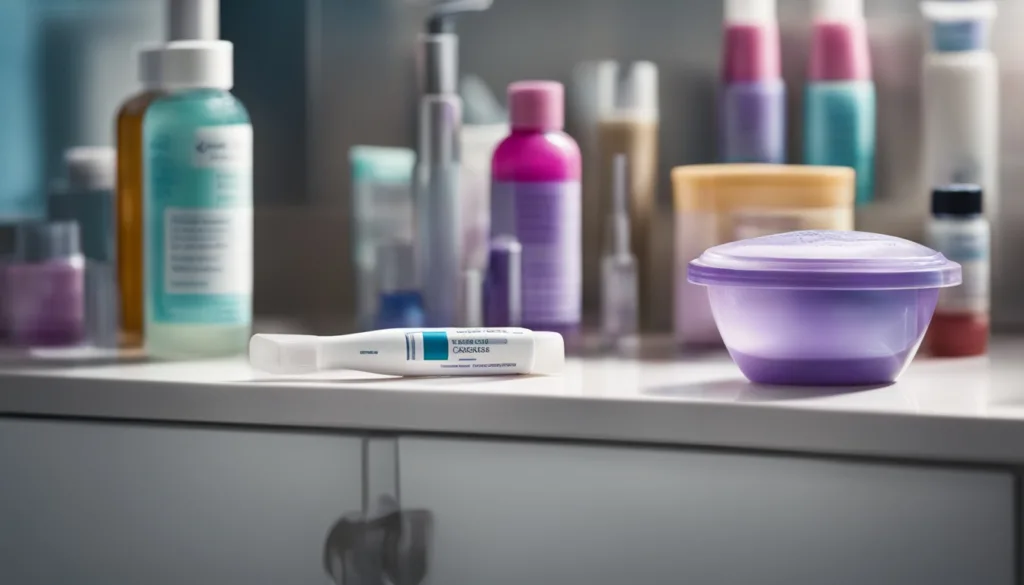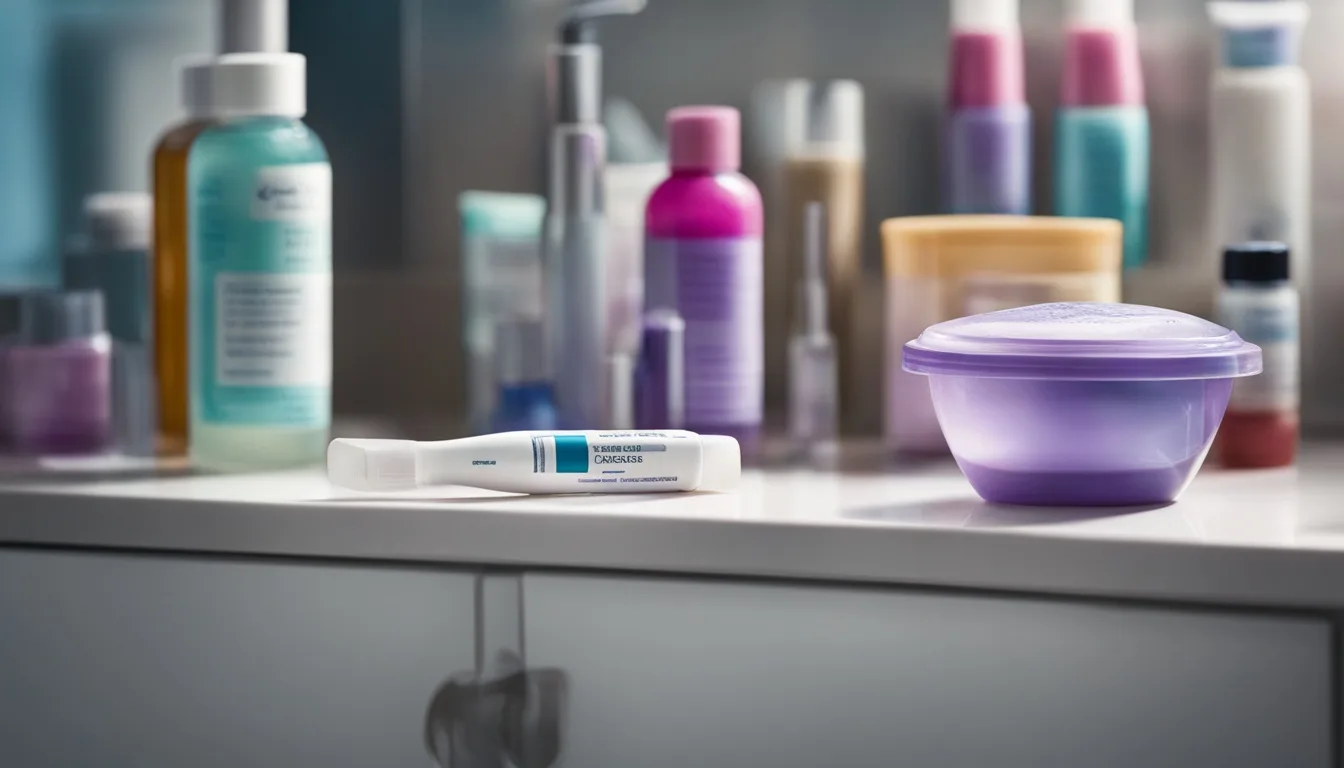I wondered if you’re testing too early. The query of when a pregnancy test will show positive is a frequent concern for those keen to confirm their pregnancy status. These tests detect the hormone human chorionic gonadotropin (HCG), which appears shortly after a fertilized egg settles in the uterus. Grasping the intricacies of HCG production is key to pinpointing the optimal time for a pregnancy test to yield accurate results. This section aims to demystify the timing of a pregnancy test read positive, focusing on the early stages of pregnancy.

Key Takeaways
- The presence of HCG is what pregnancy tests detect.
- Timing affects the accuracy of at-home pregnancy tests.
- Understanding the implantation process can help clarify results.
- Taking the test at the right time is crucial for dependable results.
- Awareness of HCG levels can guide expectations regarding test outcomes.
- Consulting a healthcare provider can provide further insights.
Understanding Pregnancy Tests
Pregnancy tests are designed to detect human chorionic gonadotropin (HCG) in urine and blood. HCG is a hormone that starts producing shortly after conception. It serves as a critical indicator of pregnancy, making it essential for confirming whether one is pregnant.
At-home pregnancy tests provide a convenient way for individuals to privately check for pregnancy. Their ease of use significantly impacts women’s reproductive health, offering quick results without the need for doctor’s visits. These tests can show results in just a few minutes, making them a favored option for those seeking swift answers.
The time it takes for a pregnancy test to detect pregnancy varies by test type. Urine tests can show results soon after a missed period. In contrast, blood tests can detect HCG earlier, sometimes within days of conception. Knowing these differences aids individuals in deciding the best time to test.
| Test Type | Detection Time | Use Convenience |
|---|---|---|
| Urine Test | 1-2 weeks after conception | At home, no medical provider is needed |
| Blood Test | 6-8 days after conception | Requires a medical provider |
How Do Pregnancy Tests Work?
Pregnancy tests are designed to detect the hormone human chorionic gonadotropin (HCG) in urine or blood. This hormone is released shortly after a fertilized egg implants in the uterus. It’s crucial to understand how these tests work to select the right one for your needs.
There are two main types: urine tests and blood tests. Urine tests, found in early detection pregnancy kits, use a reactive strip. This strip shows a positive result with a plus sign or the word “pregnant.” They are easy to use and can be taken at home, offering immediate results.
Blood tests, however, are done in medical settings and provide a detailed look at HCG levels. They are less common due to their cost and the accuracy of at-home tests. The sensitivity of pregnancy tests varies, affecting when a test can confirm pregnancy.
Knowing how these tests work helps individuals choose the best test for their needs. This depends on when they want to test and how sensitive they need it to be.
| Test Type | Detection Method | Pregnancy Test Sensitivity | Results Time |
|---|---|---|---|
| Urine Test | Home use with reactive strip | Varies; typically less sensitive than blood tests | 3-5 minutes |
| Blood Test | Hours to days, depending on the methods | More sensitive; can detect lower levels of HCG | Hours to days, depending on methods |
Types of Pregnancy Tests
When considering pregnancy testing options, individuals often encounter two primary types of pregnancy tests: urine tests and blood tests. Each type has its specific uses, advantages, and limitations.
Urine tests, commonly known as pregnancy tests read positive, can provide quick results and are easily accessible. These tests measure the presence of human chorionic gonadotropin (HCG) in urine. The at-home pregnancy test accuracy can vary depending on the sensitivity of the test and the timing of the test about conception.
Blood tests for pregnancy are conducted in a clinical setting and can detect pregnancy earlier than urine tests. They come in two forms: qualitative and quantitative. The qualitative blood test simply confirms whether or not HCG is present, while the quantitative test measures the exact level of HCG in the bloodstream, offering more detailed information.
Understanding the differences between these types of pregnancy tests helps individuals make informed decisions about how and when to test for pregnancy.
| Type of Test | Method | Time to Results | HCG Detection Sensitivity |
|---|---|---|---|
| Urine Test | At-home | Minutes | Varies by brand |
| Blood Test | Clinical | 1-2 Days | Higher sensitivity |
Choosing between an at-home test and a blood test for pregnancy depends on personal preferences and specific circumstances surrounding each individual’s reproductive health. Understanding these factors ensures proper utilization of the available testing options.
At-Home Pregnancy Tests
At-home pregnancy tests provide a convenient way for individuals to get quick results. They are widely available and designed for easy use, allowing for private testing at home. Knowing how to use these tests effectively will improve their accuracy.
How to Use At-Home Tests
There are two primary methods to use at-home pregnancy tests: either urinate directly on the test strip or collect urine in a cup and then add the strip. For the best early pregnancy test accuracy, it’s recommended to use first-morning urine. This sample typically has the highest concentration of human chorionic gonadotropin (HCG).
- Read the instructions carefully before testing.
- Ensure hands are clean before handling the test.
- Wait for the indicated time to ensure accurate results.
Accuracy and Limitations
At-home pregnancy tests are about 99% accurate when used correctly. However, timing is crucial. Testing too early may lead to a false negative pregnancy test, as HCG levels might not be detectable. The limitations of pregnancy tests include variations in sensitivity across brands. For instance, Clearblue and First Response may produce different results due to their distinct sensitivities. Understanding these factors is key to grasping at-home test accuracy.
When to Take a Pregnancy Test
Timing is crucial for the accuracy of pregnancy tests. The best time to test is after missing a period. At this point, the hormone human chorionic gonadotropin (HCG) has likely accumulated in the body, making results more dependable. Early testers, however, may see results as soon as four days before a missed period. Yet, these early results can be inconsistent, and a negative test doesn’t necessarily mean pregnancy has not occurred.
Knowing your menstrual cycle is key to figuring out the best time to test. Women often use calendars to track their cycles, helping them pinpoint the most accurate time to test. If ovulation happens mid-cycle, testing soon after a missed period is likely to give more accurate results. Remember, the length of the menstrual cycle varies among individuals.
- After a missed period for the most accurate results.
- Some tests allow checking four days before a missed period.
- Timing may vary based on individual cycles and ovulation patterns.
While waiting for a positive test result, it’s important to note that early tests might not detect lower HCG levels. For the best outcomes, follow the manufacturer’s instructions and be patient. This patience increases the likelihood of getting a true positive result.
How Soon Will a Pregnancy Test Read Positive
Understanding when a pregnancy test will show a positive result involves several factors. These include the timing after conception and the biological processes that follow. Knowing these elements helps individuals optimize their chances for accurate results.
Timing According to Conception
Typically, how soon will a pregnancy test read positive is linked to the timing of conception. After fertilization, the embryo must implant itself into the uterus. This process, referred to as the implantation timeline, generally takes about six to twelve days. Human chorionic gonadotropin (HCG) starts to be produced once implantation occurs. Most at-home tests can detect HCG in urine about a week after implantation, leading to the first reliable instances of a positive result timing.
Impact of Ovulation and Implantation
The impact of ovulation plays a crucial role in determining when a pregnancy test may reveal a positive outcome. Women with regular cycles usually ovulate about two weeks before their next period. Testing too early can result in inaccurate readings. To achieve the fastest positive pregnancy test result, wait at least a few days after the expected date of the menstrual period. This period allows for sufficient HCG levels to build up, ensuring a higher likelihood of accurate pregnancy test detection time.

| Timing After Ovulation | Event | HCG Detected |
|---|---|---|
| 0-7 days | Fertilization occurs | No |
| 6-12 days | Implantation | Begins |
| 7-14 days | Possible positive result | Yes |
| 14 days and beyond | Optimal testing time | High likelihood |
Pregnancy Test Sensitivity Timeline
Understanding the various sensitivities of pregnancy tests is crucial for individuals seeking early results. Different pregnancy tests have unique abilities to detect hormones, primarily human chorionic gonadotropin (HCG). This hormone increases rapidly during pregnancy, affecting the timeline for testing. Knowing how HCG levels fluctuate helps users determine when to conduct a urine pregnancy test for accurate results.
Understanding HCG Levels
The timeline for a positive pregnancy test hinges on understanding HCG levels. After conception, HCG begins to appear in the bloodstream and urine. The levels increase significantly during the early weeks of pregnancy. Effective pregnancy tests can identify these HCG levels earlier than others, which matters for those eager for confirmation. Many sensitive pregnancy kits can detect HCG levels as low as 10 mIU/ml, allowing for much earlier positive results compared to tests that may only recognize higher concentrations.
Brand Differences in Sensitivity
Not all home pregnancy tests provide the same sensitivity. This variance contributes to brand differences in sensitivity that consumers should be aware of. Some brands claim the ability to detect HCG levels up to 6 days before a missed period, while others may require waiting longer. A comparison of leading brands reveals significant disparities that can impact immediate decision-making regarding pregnancy. Choosing an effective pregnancy test with higher sensitivity is key for those needing clarity in the early stages.
| Brand | Sensitivity (mIU/ml) | Days Before Missed Period |
|---|---|---|
| First Response Early Result | 6.5 | 6 days |
| Clearblue Early Detection | 10 | 5 days |
| Ept Early Test | 25 | 4 days |
| Walgreens Brand Pregnancy Test | 30 | 3 days |
False Positives and False Negatives
It’s crucial to grasp the concepts of false positives and false negatives in pregnancy tests. False negatives happen when a test misses detecting pregnancy when it’s present. This often occurs if the test is taken too early when hCG levels are still low. Drinking too much water before testing can also dilute the urine, making hCG levels undetectable.
On the flip side, false positives can cause significant emotional distress. Certain medications, like those containing hCG, can skew test results, leading to a false positive. Some medical conditions, such as ovarian cysts or recent pregnancies, can also produce false positives. The accuracy of pregnancy tests hinges on understanding these factors and interpreting results correctly.
Knowing about these limitations helps users grasp the full picture of pregnancy testing. Being clear on the causes and effects of false positives and false negatives aids in making informed choices. Below is a summary table highlighting common causes of inaccuracies in pregnancy tests:
| Type of Result | Causes | Considerations |
|---|---|---|
| False Negative | Testing too early, using diluted urine, less sensitive test. | Repeat the test after a few days. Use first-morning urine. |
| False Positive | Medications with hCG, medical conditions, chemical pregnancy. | Consult a healthcare provider. Follow up with blood test. |

The Role of Blood Tests
Blood tests are crucial for early pregnancy detection. Healthcare professionals administer these tests, which can pinpoint pregnancy within 7-10 days post-conception. This is notably earlier than home pregnancy tests.
These tests excel by measuring human chorionic gonadotropin (HCG) levels, a hormone produced during pregnancy. Monitoring HCG levels is vital for tracking pregnancy progress. It’s essential for both healthy and potentially complicated pregnancies.
When comparing blood tests to urine tests, blood tests can detect lower HCG concentrations. This makes them ideal for those wanting pregnancy confirmation before missing a period or for those with irregular cycles. The information from blood tests helps individuals make informed choices about their reproductive health.
Consulting a Healthcare Provider
Upon a positive pregnancy test, consulting a healthcare provider is crucial. These experts can verify pregnancy through blood tests or ultrasounds, ensuring precise confirmation. This step is vital for those seeking definitive answers on their pregnancy status and the subsequent steps.
Following confirmation, professional guidance in pregnancy offers immense benefits. Healthcare providers provide insights into pregnancy stages, discuss health risks, and outline prenatal care options. This support is invaluable in preparing for the pregnancy journey ahead.
Moreover, follow-up pregnancy testing may be advised to track hCG levels over time. This monitoring provides insights into the pregnancy’s progression. It ensures any concerns are addressed swiftly, enabling proactive measures if necessary.
Related Article: 15 Essential Pregnancy Tips for a Healthy and Happy Pregnancy

Conclusion
The journey into understanding pregnancy detection culminates in a comprehensive recognition of how different factors influence test outcomes. It’s crucial to know when to take a test, the types available, and the biological elements at play, such as HCG levels. Each of these components plays a pivotal role in achieving accurate results.
Insights into pregnancy tests reveal that timing is critical. Conducting a test too early can result in false negatives or unreliable readings. Understanding the nuances of your cycle and the test’s sensitivity can significantly improve your chances of an accurate outcome. Not all tests are created equal, and personal factors can further affect their performance.
Ensuring accurate readings starts with informed decision-making and may involve consultations with healthcare providers for personalized guidance. Gaining a solid grasp of the logistics involved in pregnancy testing will empower individuals as they navigate their experiences. With the right knowledge at hand, one can approach pregnancy detection with confidence, knowing they are equipped for the next steps in their journey.
FAQ
A pregnancy test can show positive as early as 8 days post-ovulation and fertilization. However, for the most accurate results, it’s advised to test after a missed period. This is when HCG levels have sufficiently increased.
The accuracy of early pregnancy tests hinges on several factors. These include the test’s sensitivity to HCG levels, the timing of the test (best after a missed period), and the urine concentration used for testing.
Yes, at-home pregnancy tests are about 99% accurate when used correctly. Yet, testing too early or using diluted urine can lead to false negatives.
There are mainly two types of pregnancy tests: urine tests for home use and blood tests done in medical settings. Blood tests can offer a more precise measurement of HCG levels.
The ideal time to take a pregnancy test is at least one week after a missed period. Alternatively, test four days before a missed period, depending on the test’s sensitivity.
Urine pregnancy tests are commonly performed at home and provide quick results. On the other hand, blood tests are conducted in medical settings. They offer a quantitative analysis of HCG levels.
Indeed, false positive results can happen due to certain medical conditions or medications. It’s crucial to consult a healthcare provider for confirmation if a positive result is obtained.
If you get a positive pregnancy test result, it’s vital to consult a healthcare provider for confirmation. Discuss your next steps with them.
To boost the chances of accurate results, test after a missed period. Ideally, test in the morning when urine is most concentrated. Always follow the test’s instructions carefully.



